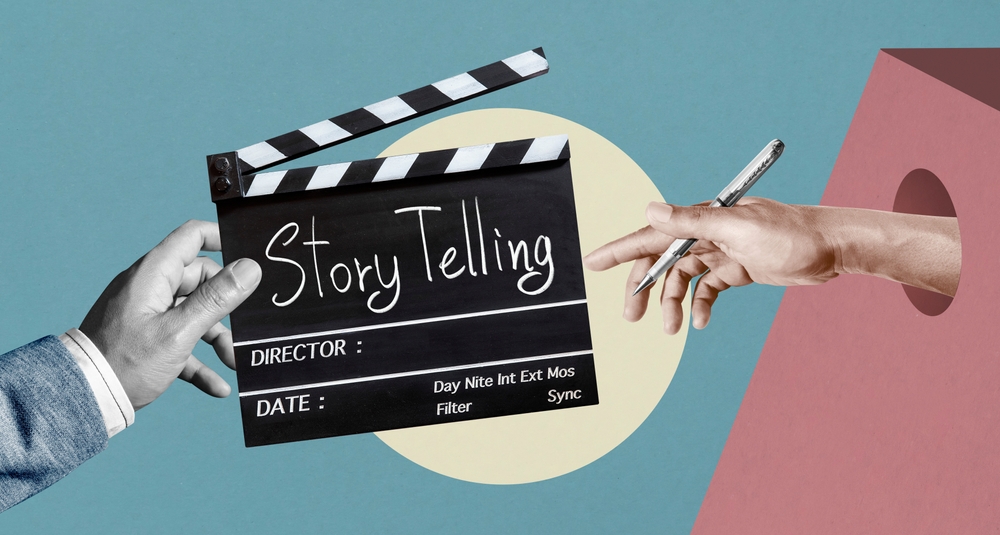In the fast-paced digital world, capturing and maintaining the attention of your audience is more challenging than ever. Video production, a powerful medium in its own right, gains exponential strength when coupled with the art of storytelling. Storytelling transforms mere content into a compelling narrative that resonates with viewers on an emotional level, making your message not only heard but felt.
This blog explores the profound impact of storytelling in video production and offers insights into how you can harness its power to engage your audience effectively.

The Essence of Storytelling
At its core, storytelling is about conveying a series of events in a structured manner, typically with a beginning, middle, and end. This structure is not arbitrary; it mirrors the way humans process and remember information. A well-told story has the power to captivate, inspire, and move people. When applied to video production, storytelling can turn an otherwise mundane topic into an immersive experience that holds the viewer’s attention from start to finish.
Why Storytelling Matters in Video Production
- Emotional Connection: Stories evoke emotions. Whether it’s joy, laughter, sadness, fear, or excitement, an emotional connection is key to making your video memorable. Emotionally charged content is more likely to be shared, increasing its reach and impact.
- Memorability: People are more likely to remember a story than a list of facts. By embedding your message within a story, you enhance recall and ensure that your audience retains your key points.
- Engagement: A well-crafted story grabs attention and keeps viewers engaged. With countless distractions vying for your audience’s attention, an engaging story helps keep them focused on your message.
- Relatability: Stories often reflect universal human experiences. When viewers see themselves in your story, they are more likely to connect with your content and take the desired action.
- Persuasion: Stories can subtly influence beliefs and attitudes. By showing rather than telling, you can persuade your audience more effectively than through direct arguments.
Get more info: How Product Photography Can Enhance Your Product Personality & Boost Your Sales
Key Elements of Effective Storytelling in Video
- Clear Structure: Ensure your video has a clear beginning, middle, and end. Introduce the characters and setting, build up to a climax or turning point, and conclude with a resolution.
- Compelling Characters: Characters are the heart of your story. They should be relatable and evoke empathy. In fact, the audience should care about what happens to them.
- Conflict and Resolution: Conflict drives the narrative forward. It creates tension and keeps the audience invested in the outcome. A satisfying resolution provides closure and reinforces the message.
- Authenticity: Authentic stories resonate more deeply. Ensure your story is genuine and aligns with your brand’s values and voice. Authenticity builds trust and credibility.
- Visual and Auditory Elements: Use visuals and sound to enhance your story. Cinematography, music, sound effects, and editing all contribute to the storytelling experience. However, these elements should complement the narrative, not overshadow it.
Practical Tips for Incorporating Storytelling in Your Videos
- Know Your Audience: Understand who your audience is and what they care about. Tailor your story to their interests, values, and pain points.
- Start with a Hook: Capture attention from the first few seconds. An intriguing question, a surprising fact, or a compelling visual can serve as a powerful hook.
- Focus on a Single Message: Avoid overwhelming your audience with too much information. Focus on one core message and weave your story around it.
- Show, Don’t Tell: Use visuals to show the story rather than relying solely on narration or dialogue. This makes your video more dynamic and engaging.
- Use Testimonials and Case Studies: Real-life stories and testimonials add credibility and relatability. They show how your product or service has impacted real people.
- Incorporate a Call to Action: Every story should lead to a next step. Whether it’s visiting your website, subscribing to your channel, or purchasing a product, include a clear call to action.
Examples of Effective Storytelling in Video Production
- Nike’s “Just Do It” Campaign: Nike’s videos often feature athletes overcoming obstacles and pushing their limits. These stories of perseverance and triumph resonate deeply with viewers, aligning perfectly with the brand’s message.
- Apple’s Product Launches: Apple’s product videos are not just about features; they tell a story about how the product fits into and enhances the user’s life, making technology feel personal and indispensable.
- Dove’s Real Beauty Sketches: This campaign told the stories of women’s perceptions of their own beauty versus how others see them. It was powerful and emotional, striking a chord with audiences globally.
Get more info: The Impact of Video Marketing – Why Your Business Needs Photography and Videography Services
Conclusion
Incorporating storytelling into video production is not just a creative choice but a strategic one. It can elevate your content, making it more engaging, memorable, and persuasive. By understanding the elements of effective storytelling and applying them thoughtfully, you can create videos that not only captivate your audience but also drive meaningful action. Whether you are a marketer, educator, or content creator, mastering the art of storytelling in video production is an invaluable skill in the digital age.

